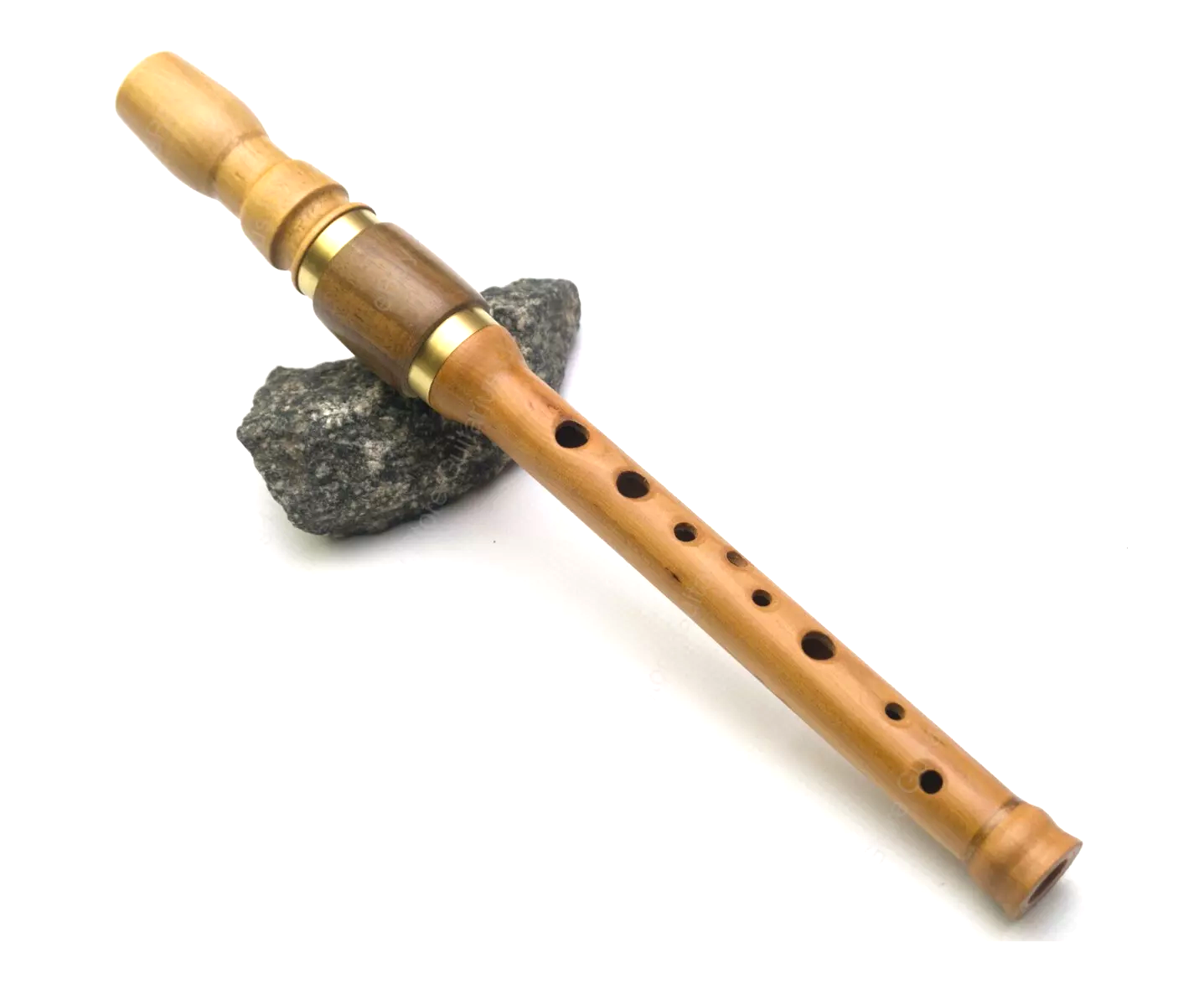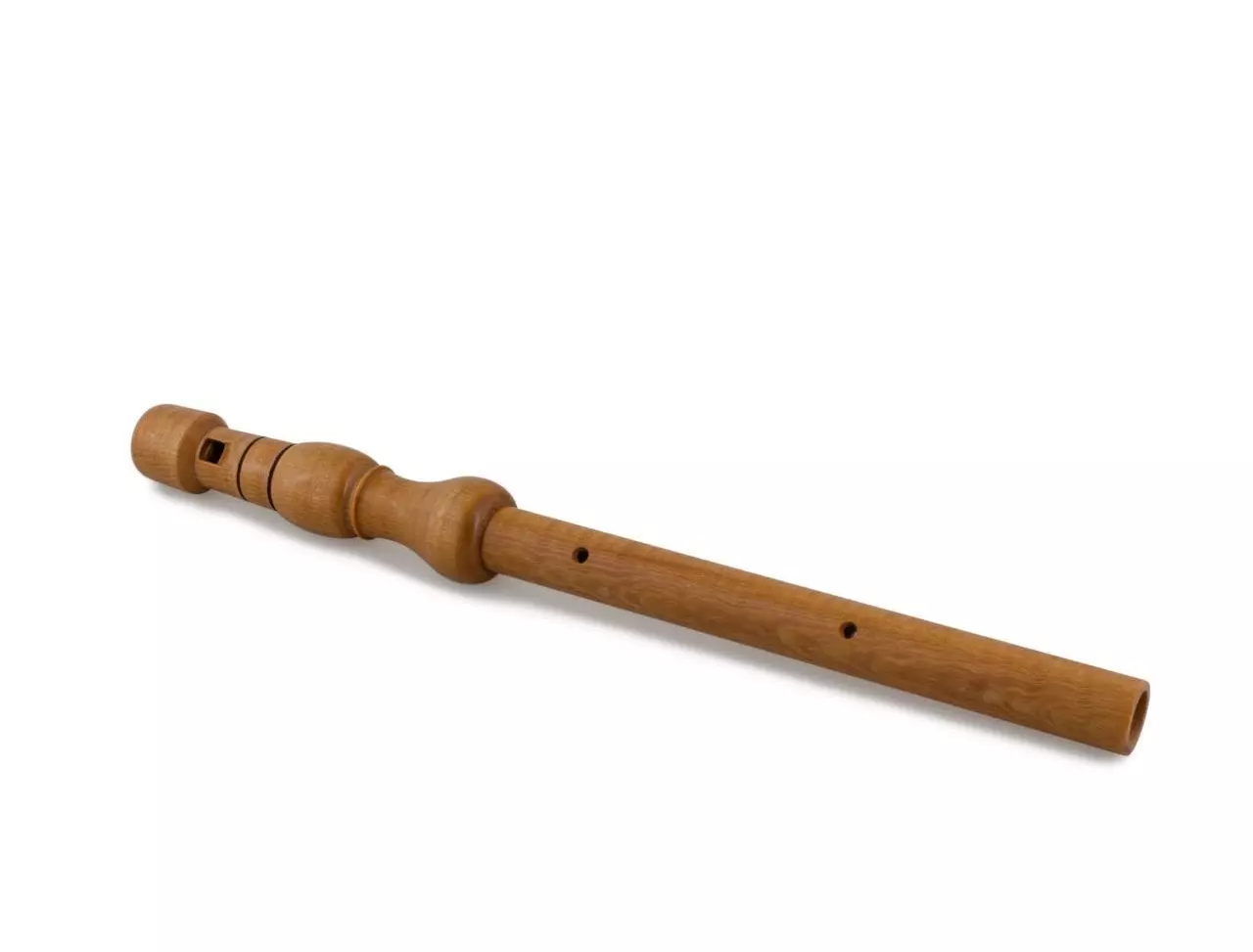Sopilka
Woodwinds
Europe
Between 0 and 1000 AD
Video
The sopilka is a traditional Ukrainian flute-like musical instrument. It belongs to the family of end-blown flutes and has been a fundamental part of Ukrainian folk music for centuries. Resembling a simple wooden tube with finger holes, it is known for its bright, clear, and expressive sound. The sopilka is typically played as a solo instrument but can also be heard in ensembles and orchestras. It is a versatile instrument, used in a variety of musical settings, including folk, classical, and contemporary compositions.
Type of Instrument
The sopilka is classified as an aerophone, a type of wind instrument in which sound is produced by the vibration of air. More specifically, it is an end-blown flute, similar to the recorder, though it differs in construction and playing technique. The instrument falls into the woodwind category due to its material composition and the method by which sound is produced. The traditional sopilka lacks a reed, making it distinct from other woodwinds such as clarinets or oboes.
History
The history of the sopilka is deeply rooted in Eastern Europe, particularly in Ukraine. It is believed to have originated as early as the 10th century, though some researchers suggest that its predecessors date back even earlier. The instrument evolved from simple reed pipes used by shepherds and common folk across the region. Historically, similar flutes have been found in many ancient civilizations, but the Ukrainian sopilka took on a unique identity due to its integration into Slavic musical traditions. It became an essential part of rural life and was commonly played by shepherds, travelers, and villagers. Over time, it gained prominence in Ukrainian cultural and artistic expressions, particularly in folk ensembles and dance music.
During the 20th century, the instrument underwent significant modifications, leading to the creation of more standardized and chromatic versions, making it suitable for modern compositions and orchestral performances.
Constructions and Material Used
The sopilka is a traditional Ukrainian woodwind instrument that typically consists of a long, cylindrical body with finger holes. It is often made from wood, such as spruce, pine, or willow, though in some cases, it can also be crafted from bone, reed, or plastic for more modern variations. The body is hollowed out to create a resonating chamber, with a small mouthpiece at one end where the player blows air. The sopilka usually has between six to eight finger holes along its length, allowing the musician to produce different pitches by covering and uncovering the holes. The instrument is similar in construction to other folk flutes but is distinctive due to its simple design and straightforward sound production. The quality of the wood used in the sopilka contributes to its tonal quality, often producing a bright, clear, and somewhat sharp sound. Historically, sopilkas were often hand-carved, with decorative elements added to the wood, reflecting the cultural significance of the instrument in Ukrainian folk music.
Types of Sopilka
The sopilka has several variations, each differing in size, pitch, and function. The most common types include:
Soprano Sopilka – The most widely used type, known for its bright, high-pitched sound. It typically has six to ten finger holes.
Alto Sopilka – Larger than the soprano version, it produces a deeper and mellower tone.
Tenor Sopilka – A mid-range sopilka used in ensembles for harmonic depth.
Bass Sopilka – The largest in the family, featuring a deep, resonant sound that provides a foundational role in music groups.
Dvodentsivka – A double-barreled sopilka, allowing for the playing of two notes simultaneously, creating a harmonic effect.
Telenka – A primitive version of the sopilka without finger holes, relying solely on breath control and overblowing techniques to produce different pitches.
Characteristics and Features
The sopilka is a traditional Ukrainian woodwind instrument, similar in some ways to a flute or recorder. It is a type of folk flute typically made from wood, although versions crafted from reed or plastic also exist. The sopilka is characterized by its long, narrow body and a series of finger holes along its length, allowing the player to alter the pitch by covering or uncovering the holes. Its distinctive sound is bright and melodic, with a somewhat piercing tone that can be both lively and expressive, making it a popular choice in folk and ceremonial music. The sopilka is played by blowing air into one end, with the player’s fingers controlling the pitch and tonal quality. While it traditionally comes in various sizes and pitch ranges, it is most commonly found in a soprano version, producing higher, more shrill notes.
The sopilka is known for its expressive capabilities, allowing the player to create a range of dynamics and effects. Its simple design and ease of use make it an accessible instrument, yet it still requires skill to master the precise finger placements and breath control necessary to produce the desired sound. Used widely in Ukrainian folk music, the sopilka often accompanies songs and dances and plays a key role in the cultural expression of the region.
Sound Production
The sopilka is a traditional woodwind instrument from Eastern Europe, particularly associated with Ukrainian folk music. It produces sound through a method similar to that of a flute, where air is blown across a hole at the top of the instrument. Typically made from wood, bamboo, or other natural materials, the sopilka has finger holes along its length, allowing the player to change pitch by covering and uncovering them. The sound is generated by the player’s breath as it flows across the blow hole, causing the air inside the sopilka to vibrate. The pitch produced by the sopilka depends on both the fingerings and the force of air blown into it. A strong, steady breath produces a louder, clearer tone, while a softer breath yields a gentler sound. The player can also alter the timbre and tone by varying their embouchure (the way the lips are shaped) or adjusting the position of the mouth relative to the blow hole. The sopilka is valued for its bright, penetrating sound, which can evoke both melodic beauty and rustic charm, making it a cherished instrument in folk traditions.
Playing Methods
Playing the sopilka involves several techniques, including:
Basic Fingering – Covering and uncovering holes to produce different pitches.
Breath Control – Adjusting air pressure to influence tone and dynamics.
Overblowing – Increasing air pressure to reach higher harmonics.
Tonguing – Using the tongue to articulate notes and create rhythmic patterns.
Vibrato – Slight fluctuations in pitch achieved through controlled breath support.
Glissando – Sliding between notes smoothly by gradually covering or uncovering finger holes.
Roles in Music
The sopilka has played an essential role in Ukrainian music for centuries. It is used in:
Folk Music – Frequently heard in traditional Ukrainian songs and dances.
Ensembles and Orchestras – Often included in folk ensembles and even adapted for orchestral settings.
Solo Performance – Popular among solo musicians for its expressive and melodic capabilities.
Religious and Ritual Music – Occasionally used in spiritual and ceremonial contexts.
Contemporary and Fusion Genres – Integrated into modern music, including jazz and world music collaborations.
Cultural Significance
The sopilka holds significant cultural value, particularly within the folk traditions of Ukraine, where it has been played for centuries. This wooden flute is an integral part of Ukrainian music, often used in both rural and urban settings during celebrations, festivals, and social gatherings. The sopilka, typically made from a single piece of wood, is known for its clear, haunting sound and is played with a style that reflects the deep connection to the land, people, and history of the region. It has been featured in a variety of Ukrainian folk music genres, including dances, rituals, and storytelling, often accompanying other traditional instruments like the bandura or tambourine. The sopilka’s role extends beyond mere entertainment; it is a symbol of national identity, especially during times of cultural revival and resistance.
In Ukrainian history, it has also been used to express resistance to foreign domination and maintain cultural unity. Its use in Ukrainian folk ensembles continues to carry emotional and historical weight, connecting generations and preserving traditional sounds for the future. The sopilka is not just an instrument, but a representation of Ukraine’s enduring cultural heritage.
The sopilka is a remarkable instrument with a rich history and significant cultural value. From its humble origins as a shepherd’s flute to its role in contemporary music, it has evolved while maintaining its distinct identity. Whether played in a traditional folk setting or a modern ensemble, the sopilka remains a vital part of Ukraine’s musical landscape, celebrated for its expressive sound, versatility, and deep-rooted traditions.
FAQ
What is a Sopilka?
The Sopilka is a traditional Ukrainian woodwind instrument, similar to a recorder or flute. It has six to ten finger holes and is made from wood or cane. Used in folk music, it produces a bright, clear sound. Variants include the dvodentsivka (double-pipe) and telenka.
How is a Sopilka played?
The Sopilka is played by blowing air into the mouthpiece while covering different holes to change pitch. Skilled players use vibrato and tonguing techniques for expression. It can play both diatonic and chromatic scales. Traditional melodies often feature fast, ornamented passages.
What is the history of the Sopilka?
The Sopilka has been a part of Ukrainian culture for centuries, dating back to early Slavic traditions. Originally a shepherd's instrument, it later became integral to folk ensembles. It has evolved in design and tuning over time. Today, it is used in both traditional and modern Ukrainian music.
 Links
Links
References
Other Instrument
Categories



















